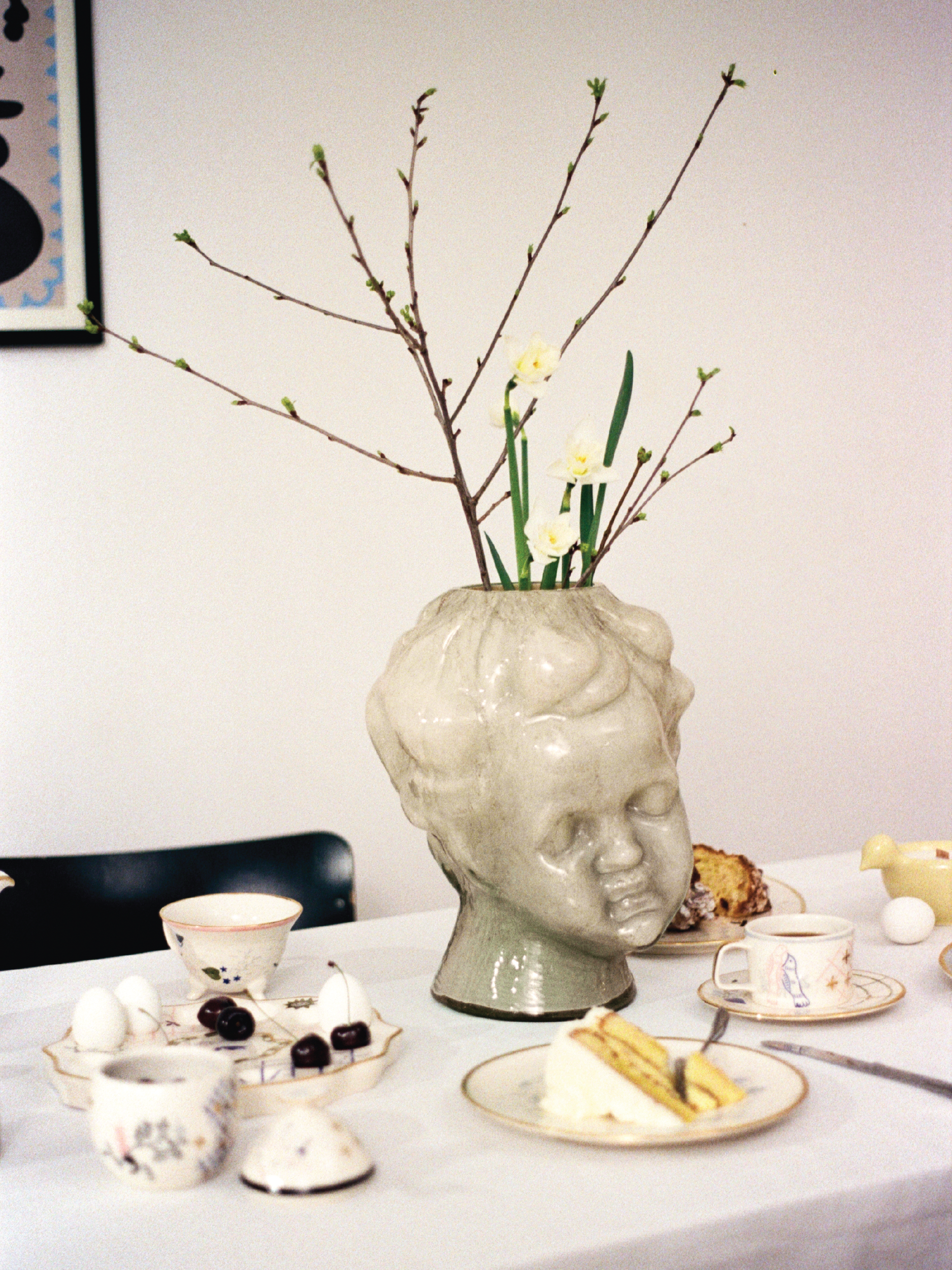We live in a turbulent period.
Art cannot exist apart from the context of the moment where it is born.
Etnodim's new collection is called "Memories of Visions"
This name reflects blurred, kaleidoscopic memories and reflections.
Colorful dreams without clear images and shapes, full of dreams.
In it, we identify the turbulent present with the quiet passage of time in the past.
A bright color palette, naive looks with sometimes fancy bouquets, flowerpots, various fruits, and animals.
We assume that embroidery was a therapeutic hobby at that time.
It helped to overcome sadness, put your thoughts in order, and find your own peace.
The collection "Memories of Visions" is a transformation of the curly and colorful patterns on towels dating back to the last century and their transfer to modern forms of clothing.
Traditional towels
Traditional Ukrainian towels are something familiar to each of us: red and black threads, canonical images of the tree of life, and counting techniques of towels stitching.
These towels are iconic, expressive, and authentic.

First and foremost, the special value of these towels lay in their ceremonial function and special sacred significance.
Traditional towels have accompanied Ukrainians throughout their lives.
Museums specializing in preserving Ukrainian heritage usually have a large collection of traditional towels.
Towels of the second half of the XX century
In the second half of the twentieth century, ornaments became simpler and naive.
The color palette became wider and bolder.
In addition to traditional subjects, women experimented with images of flowers, vases, fruits, and bouquets.

Generous coloring was achieved thanks to vegetable dyes. Sometimes, when there was a shortage of the desired color, craftswomen would sell their home textiles.
It was only later that dyes and ready-made colored threads began to appear on the market.
Thanks to a large color palette and layering of threads, women were able to achieve a gradient effect in embroidery.
The women were inspired by everything beautiful that they could see: flowers in their own yards, pets and local birds, magazine clippings, and postcards.
They often drew the sketches themselves and transferred them to the fabric using copy paper.

The ceremonial function of towels almost faded away during this period. Sometimes they were used to decorating everyday life, given as gifts for holidays.
However, over time, they did not receive proper attention: they were often used as bedding or even rags.
Colorful and intricate patterns on towels of the second half of the twentieth century became the basis of the collection. We were inspired by the idea that such sincere, folk, fantasy art, once neglected, could get a new lease of life in the twenty-first century and reach a new artistic level.
While studying the topic of towels of the second half of the twentieth century, we consulted with representatives of the National Museum of Decorative Arts and the Ivan Honchar Museum, visited libraries, and researched archival materials. To get a holistic picture of the topic, we also contacted the owners of private collections.
We are convinced that research is an important step towards a deeper understanding of any topic.
One such owner is Liudmyla Diduk from the village of Mokra Kalyhirka in Cherkasy region.
Liudmyla is the founder of the local museum of history and culture. She devoted her entire life to the well-being of her native village, working as a local school teacher, deputy principal, and later as a village head.

Almost 50 years ago, she began collecting exhibits. And in 1994, she founded a modern local history museum in one of the school premises.
Today, the museum has 2370 different exhibits, about 100 of which are embroidered towels.
Liudmyla knows the history of each towel in her collection.
Some were embroidered by her mother, and some by a neighbor who suffered the painful loss of her husband, but embroidered the most colorful towels in the village.
Some of the exhibits were preserved only thanks to Liudmyla, who actually snatched the works from the hands of those who were going to get rid of them.
We were impressed by Liudmyla's love for her native land and her special attention to preserving the heritage of the people of her village.
If you have a chance, we recommend that you visit Liudmyla and feel the warmth of her collection.
The line of the "Memories of Visions" collection includes men's and women's products that can be easily combined with each other and diversify the basic wardrobe with their expressiveness. Most of the products are available in two color options.
In addition to the usual shirts, our assortment includes fitted jackets, men's vests and basic linen pants without embroidery.

Women's models are expressive. Men's models are more versatile, so they are classified as unisex.
Volumetric appliqué, nuanced asymmetry and layering of different embroidery techniques and styles are our embodiment of experimental clothing decoration techniques and a way to go beyond the flat pattern. Each piece from the collection demonstrates the versatility of the art of embroidery.
With this collection, we aim to satisfy the mental need for lightness, simplicity and clarity that is so lacking nowadays. We want the clothes from the "Memories of Visions" collection not to blind our eyes to the realities of today, but to give us comfort, space for dreams and hope for a better future.
Source: Etnodim



